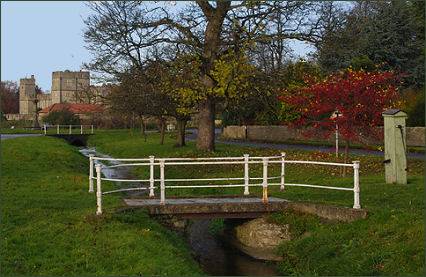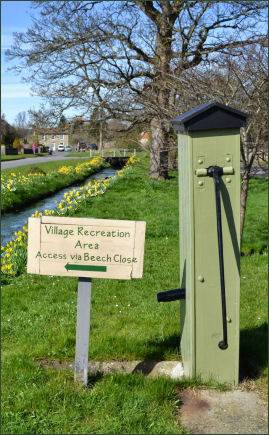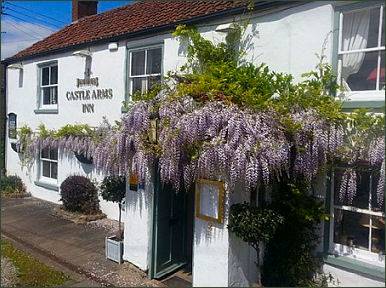Snape
OS grid reference:- SE 268 842

 The large and highly attractive North Yorkshire village of Snape is situated around 3 miles (5 km) to the south of the market town of Bedale.
The large and highly attractive North Yorkshire village of Snape is situated around 3 miles (5 km) to the south of the market town of Bedale.
Snape has a number of historic connections. It was once the site of a Roman villa, but the real history of the village began in about 1250 when Ralph FitzRanulph, Lord of Middleham (1218-1270) built a wooden manor house there. The FitzRanulph manor house was located across the road from the present Snape Castle. It would most likely have been a single roomed wooden structure with a great hall.
Ralph FitzRanulph's eldest daughter and heiress, Mary FitzRanulph married Robert de Neville of Raby Castle and Snape remained in the ownership of the influential Neville family until the late sixteenth century. Snape had a connection to Cecily Neville 'the Rose of Raby', mother of the Yorkist kings Edward IV and Richard III and her great neice Queen Anne Neville, the mother and wife of King Richard III.
Snape Castle was also the residence of Catherine Parr and her husband, John Neville, 3rd Baron Latimer, before she became the sixth wife of King Henry VIII. During the Pilgrimage of Grace in 1536, a Yorkshire rebellion against Henry VIII's religious reforms, Lord Latimer was in London and his castle at Snape was occupied by Roman Catholic rebels who ransacked the house and held Catherine and her Neville stepchildren children hostage.
Before the mid nineteenth century, the village was a centre for the woolcombing trade. but, following the expansion of mills in the West Riding of Yorkshire, its population declined.
The layout of the village we see today was probably introduced in the fifteenth century when the manor house of Snape Hall, now Snape Castle was begun. It is built on the boggy land of Snape Mire.
 The Wisteria clad village pub, the Castle Arms Inn (pictured right) offers a full bar and restaurant menu offering meals made from locally sourced ingredients which are served at both lunchtimes and evenings.
The inn is an eighteenth century conversion from a farm and outbuildings which mixes traditional charm with modern features and is Grade II listed.
The Wisteria clad village pub, the Castle Arms Inn (pictured right) offers a full bar and restaurant menu offering meals made from locally sourced ingredients which are served at both lunchtimes and evenings.
The inn is an eighteenth century conversion from a farm and outbuildings which mixes traditional charm with modern features and is Grade II listed.
Near to the village is Thorp Perrow Arboretum. Thorp Perrow Hall is a large country house dating to the eighteenth century which stands on the northern edge of Snape village. Thorp Perrow holds what is considered to be one of the finest collections of trees and shrubs in Britain. It was created by Colonel Sir Leonard Ropner (1895-1977) who began the Arboretum in 1931
Snape Castle
Snape Castle, which is approached through an imposing avenue of lime trees, dates back to around 1430, when Ralph de Neville, 1st Earl of Westmorland granted Snape to his younger son, George Neville, 1st Baron Latimer.
Lord Latimer demolished the medieval manor which previously occupied the site and replaced it with a castellated house. Most of the castle is sadly now in ruins, but the South Wing forms two private residences. Beneath the castle there are no foundations, only huge oaken piles 12 feet long and 8 feet in diameter which are about 700 years old, which were necessary as the building stands on boggy ground.
Snape Castle Chapel was built by George Neville in the fiftenth Century to serve as a domestic chapel for his household. The chapel is situated on an upper floor of a building on the south side. It is approached via some steps from ground level which ascend to an outer door. A small vestry is at the top of the stair, and links to a passage from the castle, which is now blocked.
